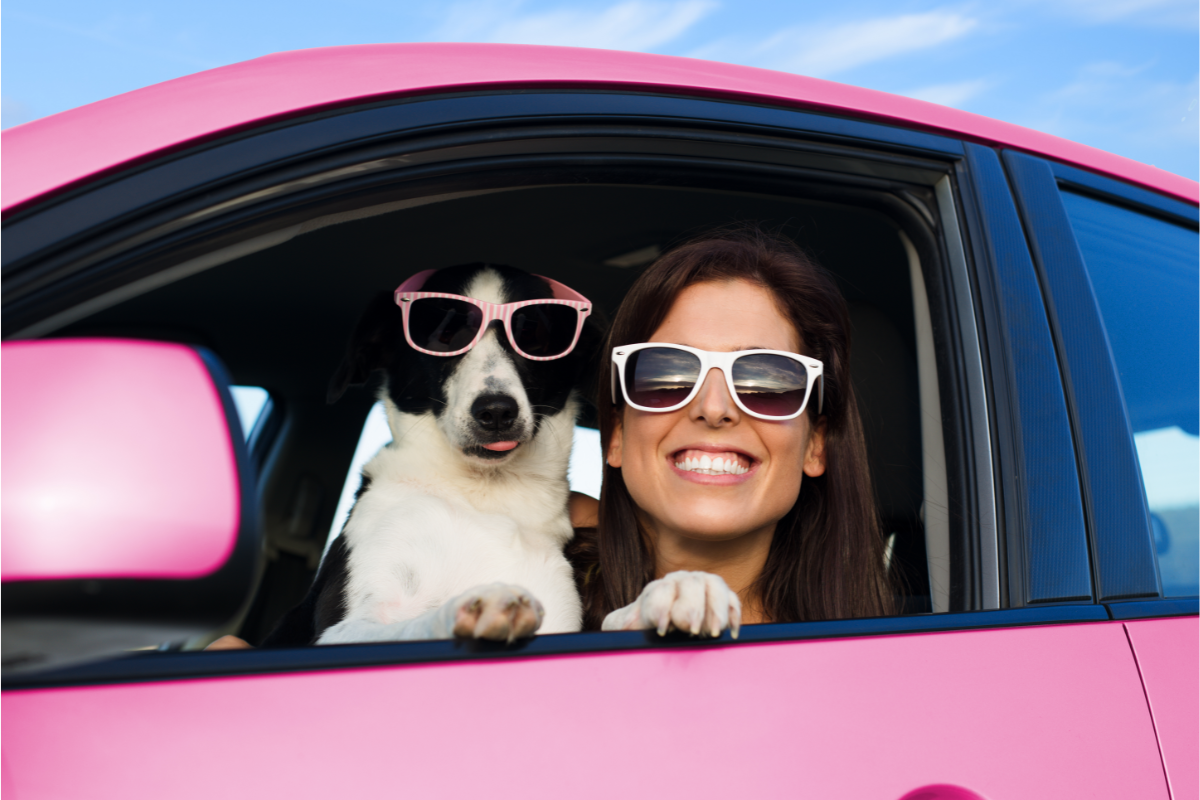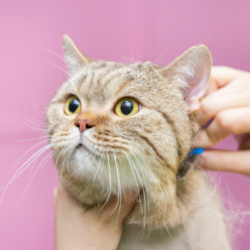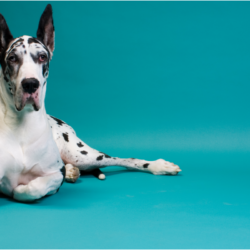Travelling with our pets can be a rewarding and joyful experience, both for us and for our faithful companions. However, just like humans, our four-legged friends can experience discomfort when travelling, known as motion sickness. This condition, which affects dogs, cats and other pets, can turn a pleasant journey into a stressful experience for them and for us.
In this article, we explore motion sickness in pets: its causes, symptoms and, most importantly, ways to prevent and treat it. We’ll look at a variety of methods, from conventional drug treatments to alternatives natural and complementary therapies, to make travelling with your pet a pleasant, stress-free adventure.
Whether you’re an experienced pet owner or new to the world of pets, this information will help you to better understand and manage your pet’s motion sickness, ensuring comfortable and happy journeys for all.
What is motion sickness?
Motion sickness, often referred to as kinetosis, is a common condition that can affect both humans and animals. This condition is particularly important to understand for pet owners who frequently travel with their companions.
Definition and mechanisms
- Sensory phenomenon: Motion sickness occurs when there is a discrepancy between visual information and that perceived by the inner ear, which is responsible for balance. This discrepancy causes confusion in the brain, leading to a variety of unpleasant symptoms.
- Physiological and psychological reaction: This sensory imbalance can cause symptoms such as nausea, dizziness and general malaise. In animals, these symptoms may manifest themselves differently depending on the species and the individual.
Implications for pets
- Varying sensitivity: Although all animals may be susceptible to motion sickness, young animals, such as puppies and kittens, may be particularly sensitive due to their still-developing vestibular system.
- Prevention and Adaptation: Understanding this condition is essential to helping our pets adapt to travel, minimising their discomfort and maximising their well-being.
In the following sections, we will discuss how to identify the specific signs of motion sickness in pets and explore various strategies to manage it effectively, ensuring comfortable and stress-free travel for your pets.
Identifying motion sickness in pets
Recognising the signs of motion sickness in your pet is crucial to effective intervention. Here’s how to identify the symptoms:
Behavioural signs
- Unusual Vocal Behaviour: Be alert if your dog barks or your cat meows in an unusual way. This change may indicate discomfort associated with motion sickness.
- Vehicle-discomfort association: Animals may associate the vehicle with a feeling of discomfort, triggering a state of stress even before starting the journey.
Physical symptoms
- Agitation and stress: A stressed animal may show signs of agitation, rapid or gasping breathing and even trembling.
- Weakness and inactivity: In more severe cases, the animal may appear particularly weak or inactive, a sign of serious malaise.
- Excessive salivation and vomiting: These symptoms are classic indicators of motion sickness. Excessive salivation and vomiting may occur during or before the journey.
- Urination and defecation problems: Unexpected urination or defecation may be a reaction to the intense stress of travelling.
Advice for owners
- Watch carefully: Observe your pet before and during the trip for any changes in behaviour or physical signs.
- Prompt intervention: If you notice any of these symptoms, it is important to intervene quickly to relieve your pet.
- Veterinary Consultation: If in doubt, a veterinary consultation can help confirm whether your pet suffers from motion sickness and provide advice on how best to manage it.
How can you prevent motion sickness in your dog or cat?
Preventing motion sickness is essential to ensure your dog or cat’s well-being when travelling. Here are some tips and recommended practices:
Diet and hydration before travelling
- Temporary fasting: Avoid feeding your pet 3 hours before departure. This helps prevent digestive nausea.
- Access to water always leave water available to keep your pet hydrated.
Behaviour management and driving
- Understanding your pet’s behaviour: If your pet becomes agitated or barks, understand that it is expressing its discomfort. Do not scold your pet, as this may increase its stress.
- Adapted driving: Adopt a gentle driving style, without sudden braking or sharp bends, to minimise your pet’s discomfort.
- Ventilation and vehicle temperature: Ensure good ventilation in the vehicle and maintain a pleasant temperature to avoid heat stress.
Medical treatment
- Double Action Anti-Vomiting Agents consider medicines such as Biocanina’s Travel Sickness for Dogs and Cats. These tablets have a dual effect:
- Anti-Vomiting Effect: They act on the brain to counter vomiting reflexes.
- Mild sedative effect: They help to calm the animal during the journey, ensuring a more peaceful journey.
Additional advice
- Getting used to the vehicle: Gradually get your pet used to the vehicle by making short trips before long journeys.
- Comfortable Space: Create a safe and comfortable space in the vehicle, with blankets or your pet’s favourite toys.
- Veterinary consultation: Before administering any medication, consult a vet to make sure it’s suitable for your pet.
Travel advice specific to certain species of pet
The approach to motion sickness varies considerably depending on the species of pet. Here is some advice for dogs, cats and other common pets.
Dogs
- Gradual adaptation: Dogs can benefit from a gradual adaptation to car journeys. Start with short journeys and gradually increase the duration.
- Safety and comfort: Use a safety harness or crate. A stable and familiar environment can reduce anxiety.
- Frequent stops: Take regular breaks during long journeys to allow your dog to stretch its legs and relieve itself.
Cats
- Familiar environment: Cats prefer familiar surroundings. Use a carrier in which they feel safe, with a blanket or a familiar toy.
- Stress Avoidance: Limit exposure to stressful stimuli such as loud noise or sudden movements.
- Soothing pheromones: Pheromone diffusers can help calm cats during journeys.
Small mammals (rabbits, hamsters, etc.)
- Transport in suitable cages: Use a transport container suited to the animal’s size, with adequate ventilation and a stable base.
- Stable temperature: These animals are sensitive to temperature changes. Maintain a constant, comfortable temperature in the vehicle.
- Access to Food and Water: Make sure they have access to fresh food and water.
Birds
- Secure Cage: Transport birds in a secure cage to avoid stress caused by excessive movement.
- Protection against dra ughts: Birds are sensitive to draughts and temperature changes. Place the cage in an area where the temperature is stable and there are no direct draughts.
Reptiles
- Insulated Transport Cage: Reptiles require a well-insulated transport cage to maintain the required temperature.
- Heating: Consider using heat packs if necessary, especially during the colder months.
These tips take into account the specific needs and behaviours of each species to ensure a comfortable and safe journey. It is essential to consult a vet specialising in your pet’s species for personalised recommendations.
Natural alternatives and complementary therapies to drug treatment for motion sickness
For those who prefer gentle methods or are looking to complement drug treatments, several natural alternatives and complementary therapies can be considered to relieve motion sickness in animals.
Natural and holistic methods
The holistic and natural approach can often offer relief without the possible side effects of medication. Two popular methods are acupuncture and aromatherapy.
- Acupuncture and Acupressure for Animals: Adapted from traditional Chinese techniques, these methods can reduce stress and balance the animal’s general well-being.
- Specific Aromatherapy for Pets: Aromatherapy, when used correctly, can provide a soothing environment for pets, particularly when on the move.
Sound therapies
Music and sound can have a remarkably calming effect on animals, making it a gentle option for managing motion sickness.
- Music therapy for dogs and cats: Research has shown that certain types of music can relax animals, which can be particularly useful on long journeys.
Nutrition and supplements
Good nutrition and appropriate supplements can play a key role in managing stress and anxiety in pets.
- Plant-based supplements natural supplements offer a gentle alternative to traditional medicines for managing motion sickness.
- Anti-stress foods: Certain foods have natural soothing properties and can be incorporated into your pet’s diet before a trip.
Environmental enrichment
Creating a stimulating and comfortable environment in the vehicle can help to distract and calm the animal during the journey.
- Soothing toys and accessories: Appropriate toys and comfortable accessories can reduce stress during transport.
- Pre-Trip Exercise: Proper exercise before leaving can help reduce anxiety and nervousness.
Behavioural consultation
In some cases, a more personalised approach may be required to effectively prepare an animal for travel.
- Advice from Animal Behaviourists: Behaviourists can offer tailor-made strategies to help your pet better manage the stress of travelling.
Veterinary motion sickness FAQ
Q1 : How can I tell if my dog or cat is suffering from motion sickness?
A1: Common signs include excessive restlessness, unusual meowing or barking, rapid breathing, trembling, excessive salivation and, in some cases, vomiting or problems with urination/defecation.
Q2 : Are there natural remedies for motion sickness in animals?
A2: Yes, remedies such as ginger-based supplements or pheromone therapies (Feliway for cats, Adaptil for dogs) can help. Always consult a vet before using them.
Q3: How can I prepare my pet for a long car journey?
A3: Get your pet used to the car by taking short, gradual trips. Provide a comfortable environment in the vehicle with familiar toys and blankets, and avoid feeding your pet just before departure.
Q4 : Is fasting recommended before a journey to avoid motion sickness?
A4: Yes, it is advisable not to feed your pet 3 to 4 hours before the journey to reduce the risk of nausea and vomiting.
Q5 : What should I do if my pet becomes agitated or stressed during the journey?
A5: Stay calm and avoid scolding your pet. Driving gently, without sudden braking or sharp bends, can help. If the agitation persists, consider taking a break or consulting a vet.
Q6 : Are cats more likely to suffer from motion sickness than dogs?
A6: It varies from one animal to another. However, cats are often less used to travelling by car, which can increase their stress. Gradual acclimatisation is recommended.
Resources and useful links
To find out more about motion sickness in pets and get practical advice, here is a selection of resources in French:
Websites
- A website dedicated to pets, offering articles, advice and information on various subjects, including travelling with pets.
- A site offering articles and expert advice on the health and well-being of pets.
Applications
- TousAntiCovid Animaux: Although focused on pet health in times of pandemic, this app can also provide useful information for travelling safely with your pets.
- Animo: An app that offers personalised monitoring of your pet’s health, useful for preparing and managing travel.
Books
- “En vacances avec mon chien et mon chat” by Dr Laetitia Barlerin: A practical guide to travelling with dogs and cats, offering advice on how to prepare and make a success of your trips.
Online forums and communities
- a forum for pet owners where you can share experiences and get advice on travelling with pets.
- 30 Millions d’Amis – Forum: The renowned association’s forum offers a place for discussion on all things animal-related, including travel advice.







